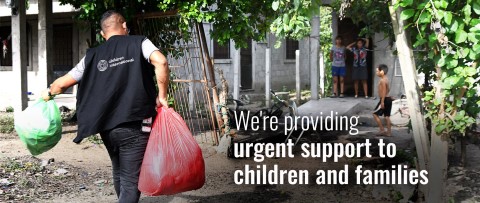
We are committed to keeping our teams and supporters informed and connected. History has shown that crises like the pandemic usually hit the poor first and worst — with low- and middle-income countries prone to weaker health systems.
Connect with our Care Team for more information.
Last reviewed: October 2022
Agency staff across the globe continue monitoring local and national government coronavirus guidelines and restrictions. As conditions slowly improve, fewer and fewer restrictions remain in place.
With these lower health risks, we are thankful to report that all our agencies have opened their community centers to our sponsored population. Some centers are operating at full capacity, while others are open with some limitations — determined by local infection rates, amount of indoor space, and other criteria.
Due to vastly improved conditions, most agencies are no longer required to provide regular COVID updates, but the following agencies continue experiencing greater disruptions: Guatemala, Honduras, India and Philippines.
Please feel free to reach out to the Care Team if you have specific questions.
Colombia | Dominican Republic | Ecuador | Guatemala | Honduras | India | Mexico | Philippines | United States | Zambia

We’re coordinating with local partners to provide as much aid as possible. Your support of the Emergency Community Fund will help provide more assistance to children and families.

Your support is helping provide telehealth services to sponsored families. Doctors are meeting over the phone, then providing referrals to health care providers.

With many community centers closed, thanks to you, we’re finding new methods to deliver value to sponsored children and youth, like digital learning sessions.

Through videos, posters and text messages, you’re helping amplify how important handwashing is to preventing the spread of the coronavirus.

Children International’s Emergency Community Fund provides a safety net when unexpected crises threaten to push already-struggling families even further into poverty.
All sponsor and donor visits remain paused for the time being. We will reassess travel guidelines as countries gain stability.

We believe that practicing healthy behaviors, like handwashing, is one of the most important steps toward ending poverty. We have a long history of teaching our children and youth essential health habits like proper handwashing, which can help prevent the spread of viruses like COVID-19.
Connect with supporters, staff, sponsored children and youth around the world as they share stories and updates on social media.